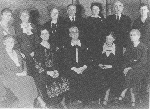

|
Hull-House was a broadly held corporation. Investors ranged from those who gave hundreds of thousands of dollars to others who lived at Hull-House for decades. Jane Addams formed a solid company of women and men committed to the progressive movement. She recruited and had the
fortune to obtain bright and caring workers who toiled diligently
beside her. Additionally, Addams needed funding for her company and didn't hesitate to ask for it. Whether looking at Alice Hamilton who lived at Hull-House for twenty years or new immigrant Hilda Satt
or educational reformer John Dewey who visited regularly, Jane Addams was
guaranteed that she would not be a lone voice in her push
for social justice. Listed below is a sampling of those investors.
Hull House Residents 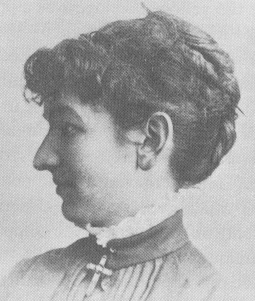 Ellen Gates Starr originally convinced Addams to leave her family
and open a settlement in Chicago. Since art was her passion, she took the lead
in cultural matters at Hull-House. Starr set up art classes, organized visits to
the Art Institute and eventually began the Chicago Public School Art Society in 1895.
Starr even "loaned reproductions of masterworks to her immigrant students to hang on
the mud-smeared walls of their tenements" (Miller, p.421). Starr felt that the
focus should not be on charity but on justice. Art for Starr was not a "passive medium
but a powerful political expression of people's experiences and hopes" (Stebner, p.87).
Starr lived at Hull-House
for over thirty years. She never attained the powerful status that Jane did. She didn't even become a "VP." For some reason her influence at Hull-House lessened over
time. Her reputation as a difficult personality and a bit fanatical distanced some. She did not die a famous and highly regarded social reformer but rather in relative
obscurity and without means.
Ellen Gates Starr originally convinced Addams to leave her family
and open a settlement in Chicago. Since art was her passion, she took the lead
in cultural matters at Hull-House. Starr set up art classes, organized visits to
the Art Institute and eventually began the Chicago Public School Art Society in 1895.
Starr even "loaned reproductions of masterworks to her immigrant students to hang on
the mud-smeared walls of their tenements" (Miller, p.421). Starr felt that the
focus should not be on charity but on justice. Art for Starr was not a "passive medium
but a powerful political expression of people's experiences and hopes" (Stebner, p.87).
Starr lived at Hull-House
for over thirty years. She never attained the powerful status that Jane did. She didn't even become a "VP." For some reason her influence at Hull-House lessened over
time. Her reputation as a difficult personality and a bit fanatical distanced some. She did not die a famous and highly regarded social reformer but rather in relative
obscurity and without means.
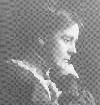 When Alice Hamilton was hired to teach at Woman's Medical School of Northwestern
University, she applied to live at Hull-House. Working at the settlement and
teaching full time left her exhausted but eager to "associate with people whom
she was raised to believe were radicals" (Stebner, 1997). She remained at Hull-House until
1919 when Harvard Medical School invited her to be their first female
professor. Hamilton was a specialist in industrial toxicology and later
became director of the Illinois Occupational Disease Commission. She lived to
be 101 years old.
When Alice Hamilton was hired to teach at Woman's Medical School of Northwestern
University, she applied to live at Hull-House. Working at the settlement and
teaching full time left her exhausted but eager to "associate with people whom
she was raised to believe were radicals" (Stebner, 1997). She remained at Hull-House until
1919 when Harvard Medical School invited her to be their first female
professor. Hamilton was a specialist in industrial toxicology and later
became director of the Illinois Occupational Disease Commission. She lived to
be 101 years old.
Florence Kelley was a fighter. 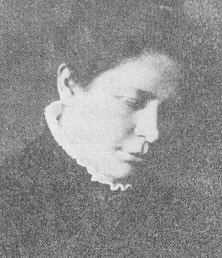 Outspoken, aggressive and brilliant,
she accomplished more for the the cause of exploited women and children
than anyone else in Chicago. Kelley graduated from Cornell in 1882 and from Northwestern
law school in 1894. Kelley galvanized and "incited Hull-House residents and associates into greater political understandings and actions" (Stebner, 118). In 1893, Governor Altgeld appointed Kelley the Chief Factory Engineer for Illinois and she maintained a staff of 12. In response to criticism for his choice, Altgeld retorted that she was the "best qualified in the country for the job" (Stebner,124). Kelley lived at Hull-House for eight years until she was appointed Head of the National Consumer's League in 1899. Outspoken, aggressive and brilliant,
she accomplished more for the the cause of exploited women and children
than anyone else in Chicago. Kelley graduated from Cornell in 1882 and from Northwestern
law school in 1894. Kelley galvanized and "incited Hull-House residents and associates into greater political understandings and actions" (Stebner, 118). In 1893, Governor Altgeld appointed Kelley the Chief Factory Engineer for Illinois and she maintained a staff of 12. In response to criticism for his choice, Altgeld retorted that she was the "best qualified in the country for the job" (Stebner,124). Kelley lived at Hull-House for eight years until she was appointed Head of the National Consumer's League in 1899.
 Julia Lathrop found herself at thirty, a bright Vassar college graduate, unable to obtain fulfilling employment. Addams convinced her to come to Hull-House and she became the inspiration behind Hull-House Maps and Papers. Governor Altgeld appointed Lathrop to the Illinois Board of Charities wherein she advocated for the mentally ill, the elderly and the physically sick. Among the early residents, Lathrop was known for her kindness and quick wit. After more than twenty years at Hull-House, Lathrop was appointed chief of the Federal Children's Bureau and moved to D.C. Julia Lathrop found herself at thirty, a bright Vassar college graduate, unable to obtain fulfilling employment. Addams convinced her to come to Hull-House and she became the inspiration behind Hull-House Maps and Papers. Governor Altgeld appointed Lathrop to the Illinois Board of Charities wherein she advocated for the mentally ill, the elderly and the physically sick. Among the early residents, Lathrop was known for her kindness and quick wit. After more than twenty years at Hull-House, Lathrop was appointed chief of the Federal Children's Bureau and moved to D.C.
Monetary Contributors 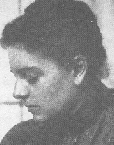 A very close friend of Jane Addams, Mary Rozet Smith was the single biggest financial contributor to Hull-House. Unlike Kelley or Lathrop, Smith was never involved in "social or scientific investigation or in overt political reform work" (Stebner,159) rather she preferred to remain behind the scenes. She offered her large home a place of refuge for Addams when settlement life weighed the CEO down. Smith's connections to Chicago society and well-established families helped ensure the success of Hull-House financially.
A very close friend of Jane Addams, Mary Rozet Smith was the single biggest financial contributor to Hull-House. Unlike Kelley or Lathrop, Smith was never involved in "social or scientific investigation or in overt political reform work" (Stebner,159) rather she preferred to remain behind the scenes. She offered her large home a place of refuge for Addams when settlement life weighed the CEO down. Smith's connections to Chicago society and well-established families helped ensure the success of Hull-House financially.
 Charles J. Hull left his entire estate to his cousin, Helen Culver, who at first was skeptical of her settlement tenants. She soon realized the benefit of the work of Starr and Addams and bequeathed them the house. Even though Addams and Starr originally named their settlement Chicago Toynbee Hall, the name "Hull" House stuck. Culver eventually granted the whole block to the Hull-House Association and gave $50,000 for a boy's building.
Charles J. Hull left his entire estate to his cousin, Helen Culver, who at first was skeptical of her settlement tenants. She soon realized the benefit of the work of Starr and Addams and bequeathed them the house. Even though Addams and Starr originally named their settlement Chicago Toynbee Hall, the name "Hull" House stuck. Culver eventually granted the whole block to the Hull-House Association and gave $50,000 for a boy's building.
Donations even came from as far away as Russia. Jane Addams met with Count Leo Tolstoy who had forsaken his wealth to identify with the poor. Tolstoy did not warm to Addams in their first meeting and commented "there was enough material in one of [her] sleeves to make a child's smock" (Addams). Addams expressed guilt at her living in comfort while Leo chose to live in poverty. Tolstoy later donated $250 to Hull-House. Lecturers and Professors Other investors in Hull-House included famous educational reformers such as John Dewey and Philosophy professor George Herbert Mead. Even though The University of Chicago worked closely with Hull-House, professors there acknowledged that Addams and her settlement associates were the leaders in the field of sociology at that time. John Dewey was a trustee of Hull-House for seven years and "viewed Hull-House as a model for what schools should become" (Bryan and Davis,104). At frequent visitor, Dewey was quick to praise Hull-House innovations. Volunteers, Friends and Visitors Hull-House was a mecca, a tourist attraction even, for visitors and its fame spread around the world. Some who came were radicals like Russian revolutionary Pavel Miliukoff, others were just curious like English author H.G.Wells. Even Franklin Delano Roosevelt commented on the outstanding success of Hull-House and sought advice from Jane Addams. More than the occassional visit from a dignitary or obscure revolutionary, Hull-House relied on regular workers and sporadic volunteers who led classes, planned parties, and protested government corruption. |
| Home | I. Introduction | II. CEO |
| V. Research and Development | VI. Infrastructure | Bibliography |